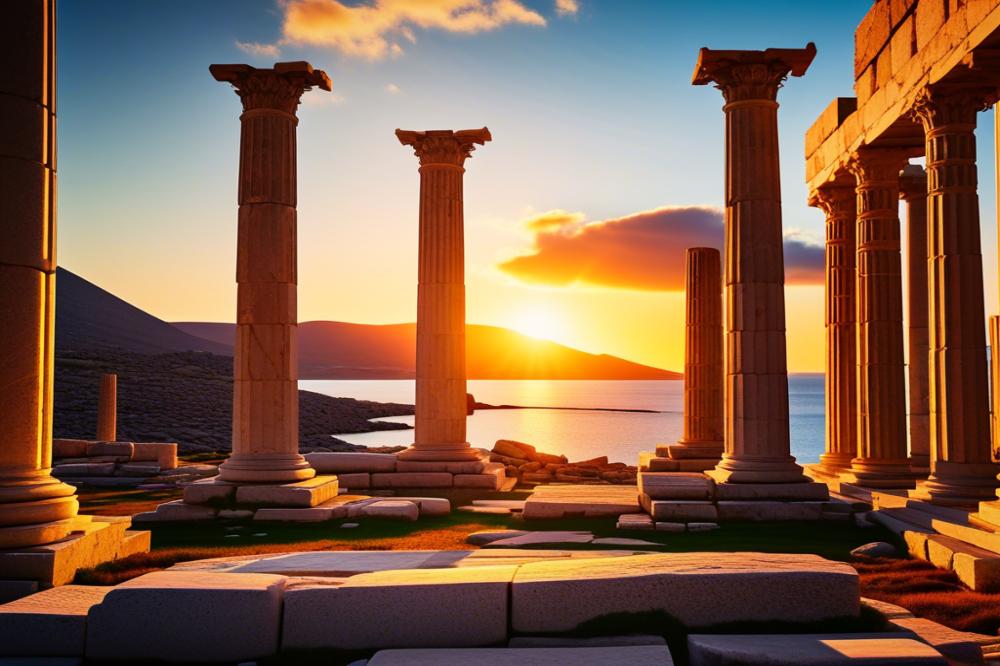Exploring the Allure of the Greek Islands
The Greek Islands are often seen as an idyllic holiday destination. Sun-soaked beaches, vibrant blue waters, and quaint villages attract millions of travelers each year. Visitors can enjoy various experiences, from lounging on sandy shores to exploring ancient ruins. Among these islands, one stands out for its rich history and significant cultural heritage: the island of Delos.
The Island of Delos: A Cultural Gem
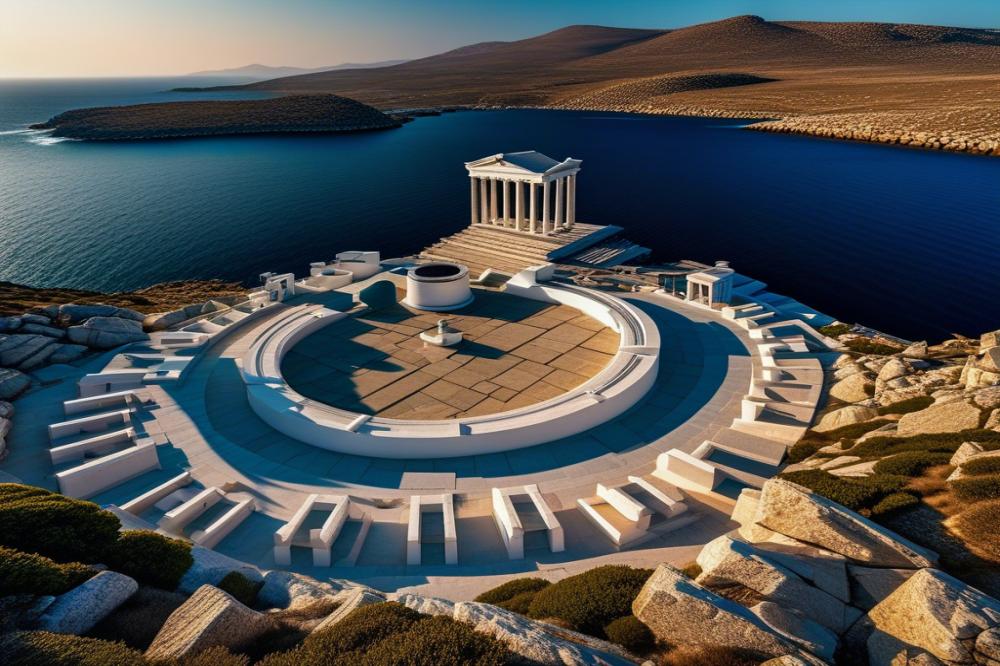
Delos holds a prominent place in Greek mythology and history. This small island, located in the Aegean Sea, is known as the birthplace of Apollo and Artemis, two highly revered deities. Because of this, Delos is considered a sacred site. It was once a thriving city, a crucial center for trade and religion. Today, it serves as an archaeological site where remnants of its glorious past can still be seen.
The Temple of Apollo: A Window into the Past
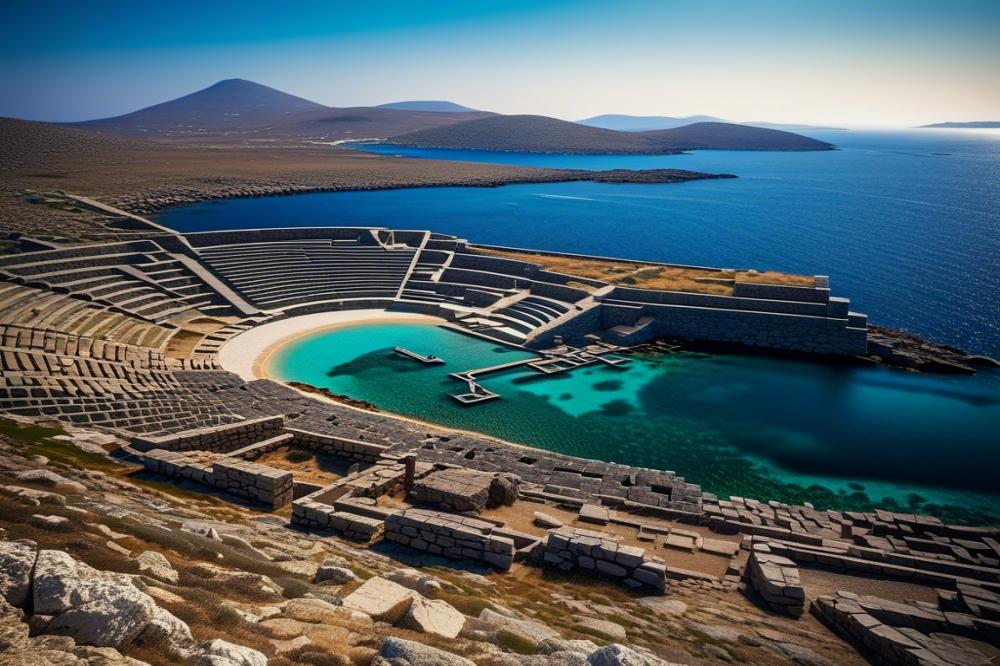
One cannot discuss Delos without mentioning the Temple of Apollo. This magnificent structure was vital to the island’s identity and attracted pilgrims from all over the ancient world. As a UNESCO World Heritage site, it represents the perfect blend of history and architecture. It gives visitors a glimpse into ancient Greek civilization and its beliefs. Wandering through these ruins offers more than just a visual treat; it invites a closer look at the values and rituals that shaped this pivotal era.
Overall, the island of Delos and its ancient sites provide an unforgettable experience for anyone looking to delve into the history of Greece.
The Temple of Apollo: A Historical Overview
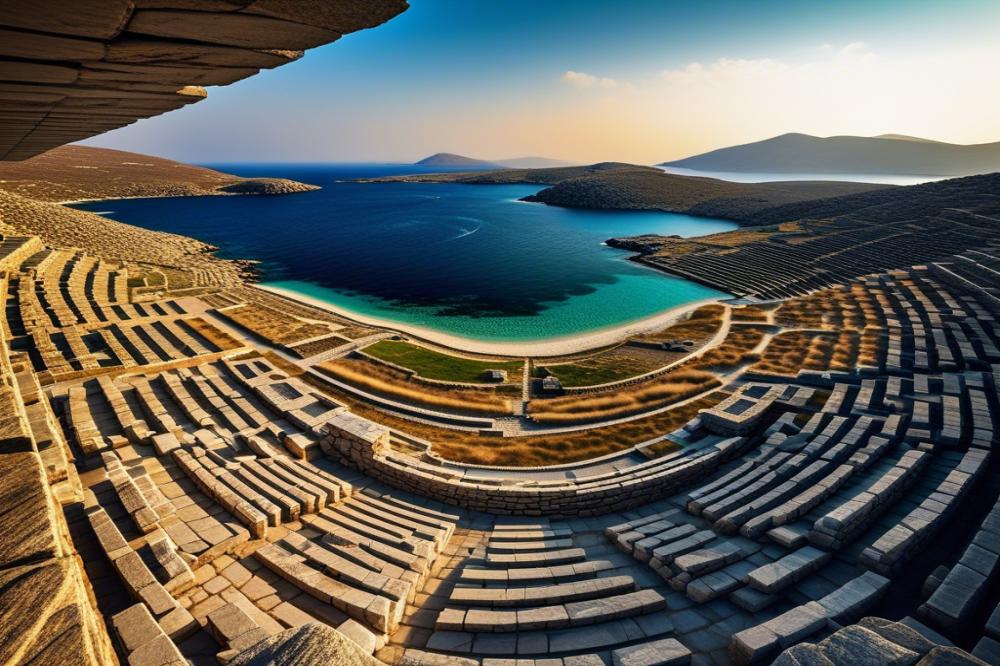
The Temple of Apollo is located on the island of Delos, an important archaeological site in the Aegean Sea. It dates back to the 6th century BC, serving as a significant center of worship for ancient Greeks. According to history, this temple was built to honor Apollo, the god of music, prophecy, and light. The site was recognized as a UNESCO World Heritage Site in 1990, highlighting its cultural heritage.
Greek mythology played a vital role in the temple’s importance. Legends suggest that Apollo was born on Delos. Thus, this sacred site became a pilgrimage destination for worshippers seeking to pay homage to the deity. Festivals and rituals were commonplace here, drawing crowds from different regions. The island was not only a religious hub but also a cultural crossroads in ancient times.
Architecture of the temple showcases stunning ancient ruins. Initially, it featured a Doric style that emphasized simplicity and strength. The layout included a grand entrance, or propylaea, leading to the altar. Tall columns lined the structure, adding to its majestic appearance. Remnants of beautifully carved friezes and sculptures can still be seen today, telling stories from Greek mythology.
The temple was much more than a mere building; it was a testament to the devotion of its followers. As a vital part of Delos’s history, the Temple of Apollo continues to captivate visitors and scholars alike. Travelers seeking a glimpse into ancient cultures should definitely explore this remarkable site.
Exploring the Archaeological Site
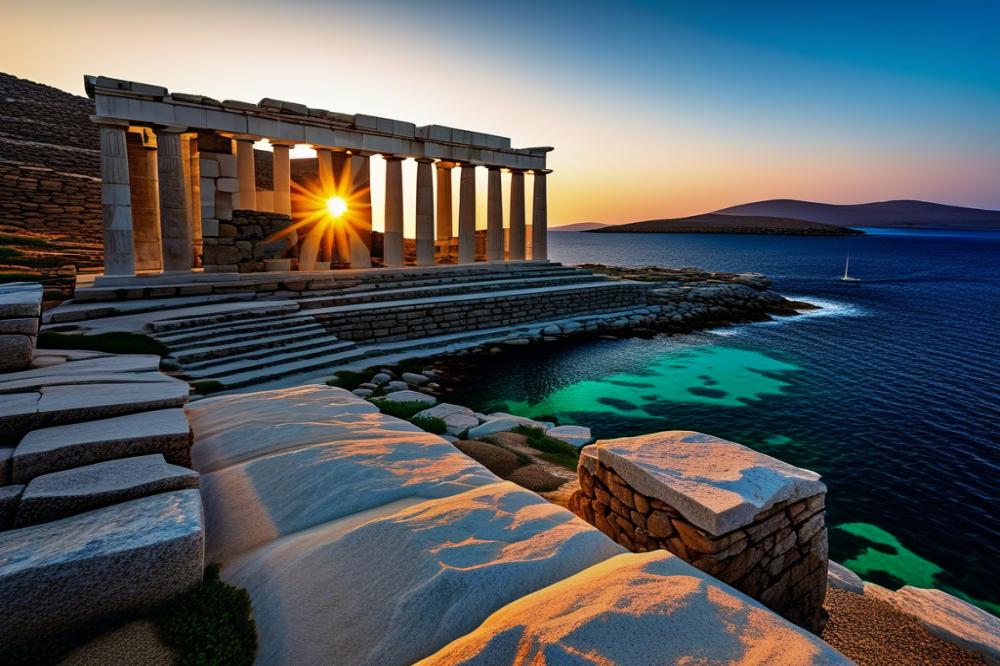
The Delos archaeological site is a remarkable location steeped in history. Situated in the Aegean Sea, this ancient spot was once a bustling center for trade and worship. Today, it is a UNESCO World Heritage site, attracting many who seek to understand its past. Visitors travel to the island of Delos not just for its ruins, but for its significance in Greek mythology.
Among the key structures surrounding the Temple of Apollo, the impressive Sacred Way stands out. This ancient path once led pilgrims to sacred ceremonies and festivals. Marble statues, many of which are now fragments, line the route. These remnants showcase the artistry of ancient craftspeople who dedicated their skills to honoring the gods.
Apart from the Sacred Way, the remains of the Terrace of the Lions capture attention. Once, these stone lions guarded the sacred site, symbolizing power and protection. While they may not be as majestic as they once were, their presence still evokes a sense of awe. The surrounding ruins also include homes and public buildings, reflecting daily life in this ancient city.
This site holds immense importance in terms of cultural heritage. It provides a window into the religious practices and societal structures of ancient Greece. Many visitors come to appreciate the blend of history and mythology that permeates the ruins. Walking through the remnants of houses and temples allows one to envision life thousands of years ago.
For those looking to explore deeper, the ancient ruins of Delos offer intriguing narratives. Each stone and pathway has its own story, connecting the past to the present. As travelers walk through these historical grounds, they become part of the ongoing dialogue about human civilization and its development.
Mythology and Cultural Heritage
The Temple of Apollo on the island of Delos is deeply rooted in Greek mythology. This ancient site is considered the birthplace of Apollo, the god of light, music, and prophecy. Legends tell of his mother, Leto, who found refuge here to bear her twins, Apollo and Artemis. Their connection to this place marks it as a significant location in the pantheon of Greek deities.
A number of fascinating stories are linked to Apollo on Delos. One tale narrates how he killed the monstrous serpent Python, establishing his dominance over the region. Others speak of the annual celebrations held in his honor, bringing devotees from distant lands. These events showcased the cultural importance of the island and further entrenched its status as a sacred site.
Travelers visiting this archaeological site today find remnants of its vibrant past. The ruins speak volumes about the religious practices and social life of ancient Greeks. UNESCO World Heritage designation highlights its cultural heritage and global significance. Insights into daily rituals and artistic expressions are evident in the artifacts found throughout the area.
Delos serves as a reminder of the rich history shared by the Aegean Sea. Many visitors walk the same paths once taken by pilgrims to honor their gods. This experience connects the past to the present, offering a glimpse into the profound spirituality of ancient communities. Exploring this sacred ground is essential for anyone interested in the intertwining of mythology and human culture.
Visiting the Temple of Apollo: A Travel Guide
Practical Tips for Visiting the Island of Delos
Visiting Delos requires some planning. This archaeological site lies in the Aegean Sea, close to Mykonos. Ferries regularly travel from Mykonos to the island. Prepare for a day of exploration; there are no accommodations on Delos. Bring plenty of water and snacks, as amenities are limited. Wear comfortable shoes because the ancient ruins are vast and require walking on uneven ground. Sunscreen is a must, especially during the hotter months.
Best Times to Visit the Temple of Apollo
The ideal time to explore Delos is during the spring and early fall. These seasons provide pleasant weather and fewer crowds. Summer can be scorching. Most tourists tend to flock to the island during July and August. Visiting in the off-season allows for a more peaceful experience. The cool breezes from the Aegean Sea make late April and October particularly enjoyable. Take a moment to appreciate the beauty and history without feeling rushed.
Guided Tours and Resources for Exploring the Site
Consider joining a guided tour for an in-depth understanding of the temple’s significance in Greek mythology. Knowledgeable guides bring the history to life, sharing stories of ancient rituals and the sacred site’s importance. Many tours include visits to other notable ruins on Delos, enriching your experience. Pre-booking is advisable during peak season to avoid long waits. Informational brochures are also available on the island, providing insights into the rich cultural heritage of this UNESCO World Heritage site. Alternatively, exploring independently allows you to set your own pace and marvel at the surroundings.
UNESCO World Heritage Status
The island of Delos holds immense significance as a UNESCO World Heritage site. This status highlights its historical and cultural importance. Visitors can discover the ancient ruins that tell stories of Greek mythology and centuries of human activity. Recognition by UNESCO brings global attention to this archaeological site. Such acknowledgment helps to protect places of great cultural heritage.
Protection and preservation efforts for the Temple of Apollo and its surroundings are critical. Local authorities, along with UNESCO, focus on maintaining the integrity of the site. Measures include monitoring for environmental issues and controlling tourist access. This helps prevent damage from weather and human activity. Educational programs also raise awareness about the site’s historical value.
Tourism has changed significantly due to UNESCO status. More travelers are drawn to the unique history of the island of Delos. With increased visitors, the need for responsible tourism rises. Awareness of cultural heritage encourages visitors to respect and appreciate the ruins. As tourists explore, they contribute to an ongoing dialogue about ancient civilizations and their legacies along the Aegean Sea.
Final Thoughts on Delos and Its Historical Significance
The Temple of Apollo stands as a significant testament to the rich history of Delos. This site was not just a religious center; it played a crucial role in ancient Greek culture and trade. The ruins tell stories of worship, commerce, and daily life thousands of years ago. Visitors to this area can explore where the ancient Greeks once gathered to honor their gods.
A trip to Delos offers an opportunity to connect with the past. Walking among the stones and remnants of old buildings allows for a deeper appreciation of how people once lived. Imagine the vibrant community that thrived here, all centered around a belief in Greek mythology and the power of the gods. The breathtaking landscapes add another layer of allure to the experience.
It is important to visit and actively engage with historical sites like this one. Each corner of Delos holds secrets waiting to be uncovered. By taking the time to appreciate this ancient site, visitors partake in a journey that transcends time. Observing the intricate carvings and monumental structures can evoke a sense of wonder and curiosity.
Exploring ancient ruins fosters a greater understanding of our history and culture. These remnants serve as powerful reminders of humanity’s past achievements and struggles. In a world that constantly evolves, connecting with these moments offers perspective. Delos is not just a place to see; it is an invitation to reflect on our shared heritage.

